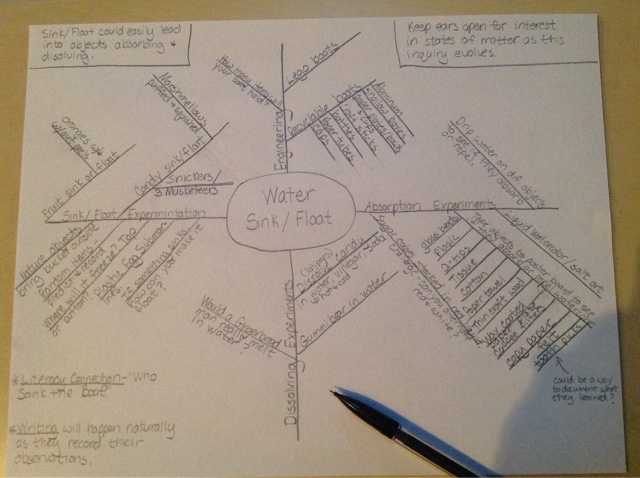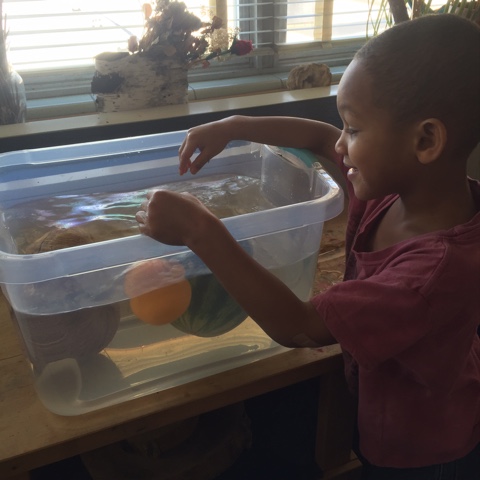They were fascinated that the candy cane "melted" and turned the water red! I found some science recording sheets for them to record what they noticed.
The kids then decided that they wanted to do water experiments. Most were very interested in exploring why some things sink and some things float so I set about planning some experiments to help them find answers. I wasn't sure if this would move in some other directions so I planned for some absorption and more dissolving experiences just in case. I often use a web map to organize my ideas.
I then set out experiences for them to explore and see what they could find out! Here I put out random objects for them to test and record what they noticed.
I challenged them to create a boat with Legos and to see how many rocks it would hold.
I provided tin foil for them to design boats and test their strength by seeing how many glass beads it could hold.
I set out some plasticine with the challenge of trying to make it float (None of us figured out how!).
They were very excited to get started!
Writing was incorporated through recording their observations and wonders. Below a friend noticed that "the puffy ball sank and floated."
We also did some experiments as a whole class. Unfortunately I do not have many photos as I was out for meetings several days and a guest teacher did these with them. We talked a lot about how scientists ask questions, make predictions and record what happened and what they learned from it. We talked about how our predictions can be wrong but that provides opportunities to problem solve and figure out why. We tested out a ping pong ball, golf ball and sphere shaped stone to see what would happen.
They noticed the ping pong ball floated, the stone sank very hard and fast, but the golf ball floated down slowly. It was fun to listen to them try to figure out why! They knew the ping pong ball was lighter and had air inside of it. One friend guessed maybe the golf ball had a little air and the stone no air at all! The kids thought this made sense!
We also experimented with a Snickers Bar and Three Musketeers Bar. They looked the exact same on the outside so they were surprised one floated and one sank! When we cut them open they came to the conclusion that the 3 Musketeers bar had little holes with air and the nuts and caramel in the Snickers took up more space leaving less air!
We put an orange in and saw that it floated. We took the peel off of one and it sank! I asked why. They figured out right away that the peel helped hold in air. I showed them a lime. They thought it would float since it was like an orange. I put the lime in the water and it sank. They wanted me to cut it open to see why it sank when the orange floated. I did and passed it around. They noticed a big hole in the middle of the orange slices and figured out it held air while the lime did not have any holes or free space inside.
The kids were definitely starting to see a connection between the amount of air and whether or not an object will sink or float! The vocabulary in their conversations were also starting to show this as they explored during Thinking, Learning and Discovery Time! These kids have now had their first experiences experimenting and learning about density!
One surprise from all of this was that all of a sudden, as we started these water explorations, rainbows started appearin in our room around 3:00 when we started our sharing circle!




















